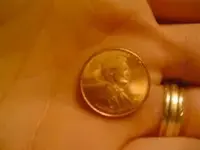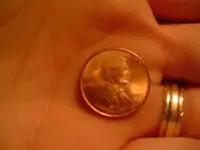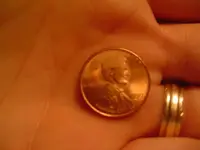There, I like that pic better.....As I'm thinking about it.....look at the coin like this.....if indeed a part of the die sheared off (just a guess) there would be nothing at that part of the coin to make contact with the "raw" planchet....maybe the area that looks "rubbed" is actually the area of the "raw" planchet that the die never touched.....A coin does not attain luster and brightness if a die does not make contact with it.....Does that make any sense?.....And by no means do I think I have a valuable coin, just a mystery I am trying to figure out....
Greg




 not saying you fudged it just ,well what dj5 said
not saying you fudged it just ,well what dj5 said

 If you've been doing this for 30 years, you'd know better than I would. The up close picture looks better, but is still a touch blury
If you've been doing this for 30 years, you'd know better than I would. The up close picture looks better, but is still a touch blury  I guess we flunked that one huh?
I guess we flunked that one huh?  Ask another question, I might know it!
Ask another question, I might know it!  All joking aside, I have looked at that picture two ways from Sunday and it still looks like the inscription has been rubbed off leaving the surface marred. Maybe I need my eyes examined? I know I need my head examined for sticking with this. What the heck do I know? I certainly hope you do have a very rare valuable coin. Monty
All joking aside, I have looked at that picture two ways from Sunday and it still looks like the inscription has been rubbed off leaving the surface marred. Maybe I need my eyes examined? I know I need my head examined for sticking with this. What the heck do I know? I certainly hope you do have a very rare valuable coin. Monty